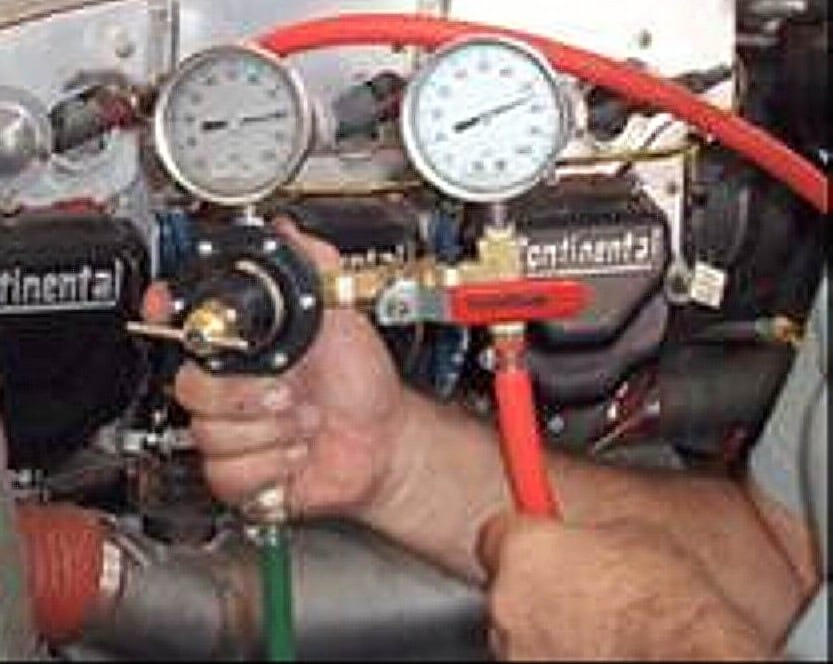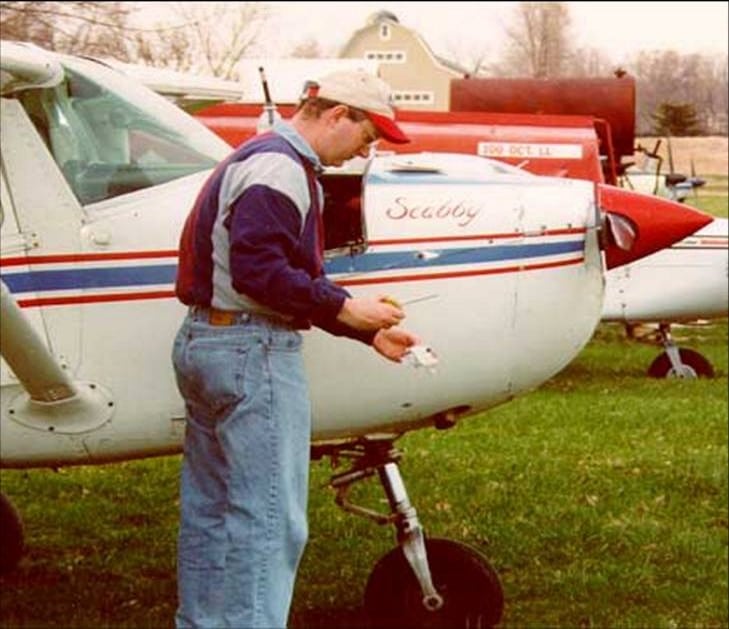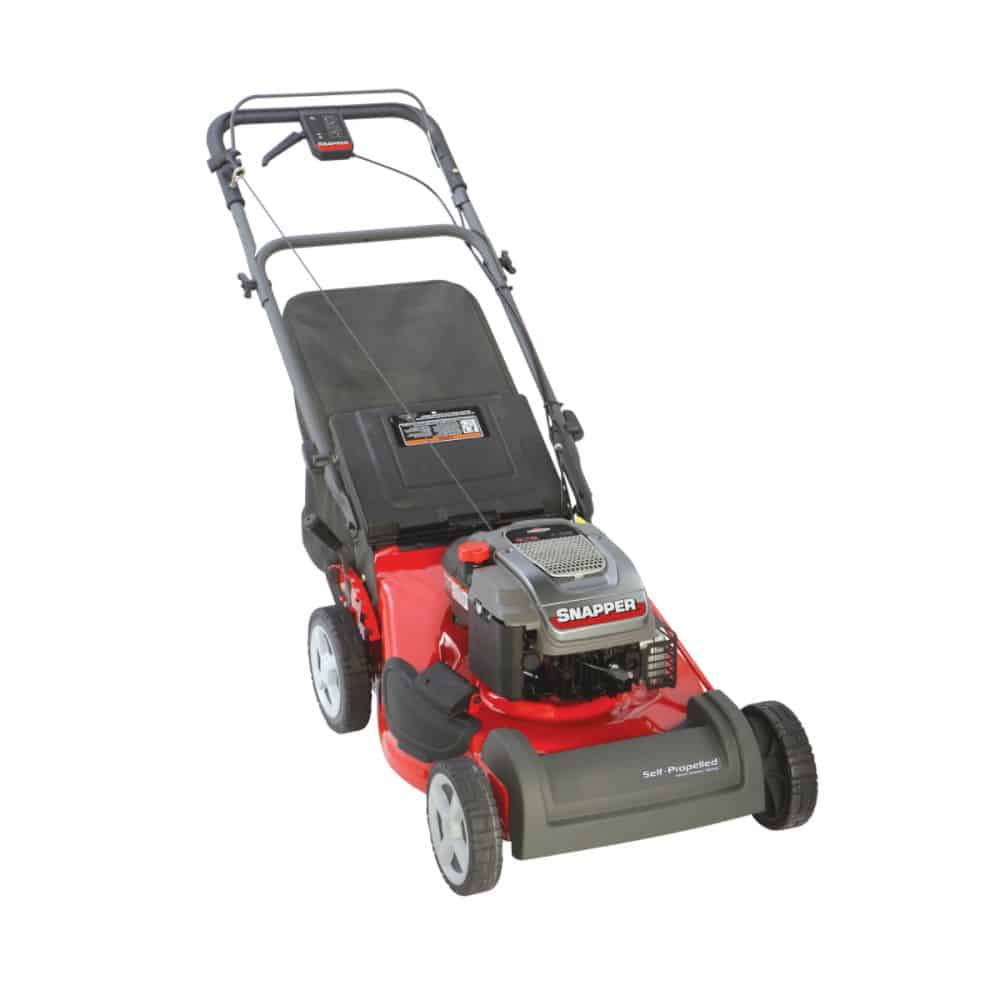How do we assess whether a piston aircraft engine is airworthy? Compression tests and oil consumption are only part of the story—a smaller part than most owners and mechanics think.
My friend Bob Moseley is far too humble to call himself a guru, but he knows as much about piston aircraft engines as anyone I’ve ever met. That’s not surprising, because the man has been rebuilding Continental and Lycoming engines for the four decades, so there’s not much about these engines that he hasn’t seen, done, and learned.
From 1993 and 1998, “Mose” (as his friends call him) worked for TCM as a field technical representative covering Missouri, Kansas, Iowa, Nebraska, North and South Dakota, Minnesota, and the portion of Canada north of those states. “Then I made someone at the factory mad,” he says, “so they gave me Arkansas.” (Not really, but it always gets a laugh.)
These days, Mose and his wife Rita operate a small shop called SkyTEK Inc. located at Fulton, Missouri, about 100 miles west of St. Louis. [http://www.skytekonline.com/] The company offers a wide variety of engine-related services including custom overhauls, prop strike inspections, cylinder work, accessory repairs, fuel injection system setup, and all manner of troubleshooting and repair. Bob is an A&P/IA and a FAA-Designated Airworthiness Representative (DAR).
Mose is also generous to a fault when it comes to sharing his accumulated powerplant expertise with others. For years, he’s been an active participant on various type club forums. I often refer owners to him when they need an expert second opinion on some engine-related subject. He also helps educate mechanics by participating in FAA-approved IA renewal seminars.
Which engine is airworthy?
During his IA renewal seminars, Mose often challenges a roomful of hundreds of A&P/IA mechanics with a hypothetical scenario that goes something like this:
“Imagine you are doing annual inspections on two similar airplanes—let’s say they’re Bonanzas—with like-type engines—let’s say TCM IO-550s.
“Bonanza A’s engine is brand new Platinum engine that the owner installed just 40 hours ago. As you’d expect, all cylinders exhibit near-perfect compression of 77/80 or better. The owner is complaining that since the new engine was installed, the oil consumption has been high—a quart every three hours or so. He also claims that the aircraft seems sluggish in cruise, the takeoff roll somewhat longer, and the climb rate slower than what he considers normal for a Bonanza. He takes you up on a brief test flight, and sure enough the plane does strike you as being a bit of a dog. The owner swears that it performed better before the new engine was installed.
“Bonanza B’s engine has 1500 hours since field overhaul by some shop you never heard of. This engine is also using a quart of oil every three hours. You check the compressions and find that they’re marginal, all in the low 50s and high 40s, just barely squeaking by the compression test criteria as set forth in TCM Service Bulletin SB03-3. The owner is not happy with the high oil consumption and the all oil on the belly, but claims that the airplane seems to be performing okay.
“Okay, you’re the IA, so you have to make the call. Which engine is airworthy?”
The correct answer, of course, is that Bonanza B’s engine is airworthy, and Bonanza A’s is unairworthy.

Bonanza B’s engine meets TCM’s SB03-3 minimum compression specs (even if just barely), and oil consumption of a quart every three hours also is high but still well within specified limits. In contrast, Bonanza A’s engine may have superb compression readings, but it’s clearly unairworthy because it’s not making full rated power—and that’s far and away the most important airworthiness criterion for any engine.
What’s wrong with Bonanza A’s engine? There are all sorts of things that can cause an engine with near-perfect compression readings not to make full-rated power: improperly timed ignition, misadjusted fuel injection system, collapsed lifters, incorrect pushrod length, bad cam, or incorrect pistons (just to name a few possibilities).
In this case, suggests Mose, the combination of high compression readings and high oil consumption suggests that the problem is most likely glazed cylinder walls due to improper break-in procedure. It’s possible that flying the engine at high power for a few hours might cure the problem; if that doesn’t do the trick, the cylinders might have to come off for honing and then break-in repeated using the proper procedure.
Who has the best engine?
Now, just to make things more interesting, Mose presents the roomful of IAs with another hypothetical scenario.
“Four good-looking fellows, coincidentally all named Bob, are hanging out at the local Starbucks near the airport one morning, enjoying their usual cappuccinos and biscotti. Remarkably enough, all four Bobs own identical Bonanzas, all with TCM IO-550 engines. Even more remarkable, all four engines have identical calendar times and operating hours.
“While sipping their overpriced coffees, the four Bobs start comparing notes. Bob One brags that his engine only uses one quart of oil between 50-hour oil changes, and his compressions are all 75/80 or better. Bob Two says his engine uses a quart every 18 hours, and his compressions are in the low 60s. Bob Three says his engine uses a quart every 8 hours and his compressions are in the high 50s. Bob Four says his compressions are in the low 50s and he adds a quart every 4 hours.
“Who has the best engine? And why?”
This scenario always provokes a vigorous discussion among the IAs. One faction typically thinks that Bob One’s engine is best and Bob Four’s is worst. Another usually opines that Bobs Two and Three have the best engines, and that the ultra-low oil consumption of Bob One’s engine is indicative of insufficient upper cylinder lubrication and a likely precursor to premature cylinder wear.

Mose takes the position that with nothing more than the given information about compression readings and oil consumption, he considers all four engines equally airworthy. While many people think that ultra-low oil consumption may correlate with accelerated cylinder wear, TCM’s research doesn’t bear this out, and Mose knows of some engines that went to TBO with very low oil consumption all the way to the end.
While the low compressions and high oil consumption of Bob Four’s engine might suggest impending cylinder problems, Mose says that in his experience engines that exhibit a drop in compression and increase in oil consumption after several hundred hours may still make TBO without cylinder replacement. “There’s aTwin Bonanza that I take care of, one of whose engines lost compression within the first 300 hours after overhaul,” Mose relates. “The engine is now at 900 hours and the best cylinder measures around 48/80. But the powerplant is running smooth, making full rated power, no leaks, and showing all indications of being a happy engine. It has never had a cylinder off, and I see no reason it shouldn’t make TBO.”
Lesson of a Lawnmower
To put these issues of compression and oil consumption in perspective, Mose likes to tell the story of an engine that was not from Continental or Lycoming but from Briggs & Stratton:
“Years ago, I had a Snapper lawnmower with an 8 horsepower Briggs on it. I purchased it used, so I don’t know anything about its prior history. But it ran good, and I used and abused it for about four years, mowing three acres of very hilly, rough ground every summer.
“The fifth year I owned this mower, the engine started using oil. By the end of the summer, it was using about 1/2 quart in two hours of mowing. If I wasn’t careful, I could run out of oil before I ran out of gas, because the sump only held about a quart when full. The engine still ran great, mowed like new, although it did smoke a little each time I started it.

“The sixth year, things got progressively worse, just as you might expect. By the end of the summer, it was obvious that this engine was getting really tired. It still ran okay, would pull the hills, and would mow at the same speed if the grass wasn’t too tall. But it got to the point that it was using a quart of oil every hour, and was becoming quite difficult to start. The compression during start was so low (essentially nil) that sometimes I had to spray ether into the carb to get the engine to start. It also started leaking combustion gases around the head bolts, and would blow bubbles if I sprayed soapy water on the head while it was running. In fact, the mower became somewhat useful as a fogger for controlling mosquitoes. BUT IT STILL MADE POWER and would only foul its spark plug a couple of times during the season when things got really bad.
“Now keep in mind that this engine was rated at just 8 horsepower and had just one cylinder with displacement roughly the size of a coffee cup, was using ONE QUART OF OIL PER HOUR, and had ZILCH COMPRESSION. Compare that to an IO-550 with six cylinders, each with a 5.25-inch bore. Do you suppose that oil consumption of one quart per hour or compression of 40/80 would have any measurable effect on an IO-550’s power output or reliability—in other words, its airworthiness? Not likely.”
Let’s Use Common Sense
I really like Bob Moseley’s commonsense approach to aircraft engines. Whether we’re owners or mechanics (or both), we would do well to avoid getting preoccupied with arbitrary measurements like compression readings and oil consumption that have relatively little correlation with true airworthiness.
Instead, we should focus on the stuff that’s really important: Is the engine “making metal”? Are there any cracks in the cylinder heads or crankcase? Any exhaust leaks, fuel leaks, or serious oil leaks? Most important, does the engine seem to be running rough or falling short of making full rated power?
If the answer to all of those questions is “no,” then we can be reasonably sure that our engine is airworthy and we can fly behind it with well-deserved confidence.
You bought a plane to fly it, not stress over maintenance.
At Savvy Aviation, we believe you shouldn’t have to navigate the complexities of aircraft maintenance alone. And you definitely shouldn’t be surprised when your shop’s invoice arrives.
Savvy Aviation isn’t a maintenance shop – we empower you with the knowledge and expert consultation you need to be in control of your own maintenance events – so your shop takes directives (not gives them). Whatever your maintenance needs, Savvy has a perfect plan for you: